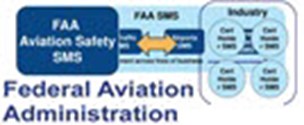National Academies point out massive future FAA challenge

Image of Future Aviation
Below is a remarkably insightful report of The National Academies of Sciences, Engineering, and Medicine. These experts alert the FAA to a need to drastically alter the perspective for its actions. To coin a phrase, this epistle may serve to create a new academic study, REGULATORIOGRAPHY, (derived from historiography[1] examining the history of regulations to chronicle what discipline and information has worked. Then to try to envision what the future advances among the regulated (carriers, personnel, airframe/powerplant/avionics/etc.) will demand of the government.
The Academies warn that the upward trajectory of the technology of all these elements MANDATE significant upgrades of the FAA’s data, computers, personnel, decision-making processes, etc. This regulatoriographical declaration needs to be understood by all in aviation and most importantly our Board of Directors—the Senate and the House.

FUTURE HALLS OF CONRESS
BRIEF. SIMPLIFIED REGULATORIOGRAPHY of FAA:
Aviation began in 1903 with an epiphany; there was no past operational history or regulatory record before and very little for decades [first effort 1922 ?]. Once the legislature established what is now the FAA, technology grew, but not exponentially; so, relying on recent experience had been a valid basis for the FARs.

Recently, however, for a variety of administrative and policy reasons, the basis for action became the newly created gargantuan databases plus almost instantaneous analytics. This quantum of real time information was large enough to postulate trend lines. Safety Management Systems allowed the regulators and the regulated to react before (hopefully) a problem occurred.
The lead of this study, Dr. Pritchett, says the retroactive prospective of the existing SMS data and analytical constructs are likely to be able to address the regulatory issues (operations, certification, infrastructure, personnel) created by this innovation Her team lists these as examples of challenges:
- “Novel ways of storing energy and generating aircraft power and propulsion
- New aircraft configurations, including for vertical take-off and landing (VTOL)
- Data mining and machine learning.”
AND make the following recommendations:
- “The FAA should work to create paths that enable the management of new technologies and operations that do not fit the assumptions of the current system,” the report says.
- “Even established companies and technologies can be vulnerable to lapses in safety management.”
- “Along with acquiring ADEQUATE FUNDING FOR EXPERT TECHNICAL STAFFING, FAA should adopt a NEW, BROADER VISION FOR SAFETY MANAGEMENT PROCESSES, the report says. In evaluating personnel requirements, the FAA’s Office of Aviation Safety should consider what expertise is needed to analyze and address current and likely future technologies and operations, to support the spread and maturation of safety culture within industry organizations, and to monitor for safety once new systems and operations are implemented.”
- The design, production, and operation of aircraft can be a highly distributed process involving a prime organization and a SUPPLY CHAIN OF THIRD-PARTY COMPONENT AND SERVICE PROVIDERS. The FAA CANNOT HAVE CONFIDENCE THAT ALL SAFETY RISKS ARE BEING IDENTIFIED, UNDERSTOOD, MONITORED FOR, AND ADDRESSED BY ONLY EXAMINING THE CULTURE AND PRACTICES OF THE PRIME ORGANIZATION, OR BY EXAMINING EACH ORGANIZATION IN THE CHAIN SEPARATELY. Effective oversight requires VERIFICATION that safety management is occurring in a deliberate, well-coordinated and well-integrated manner across the many organizations involved, in a continuously applied and monitored layered safety management system, the report says. The FAA should establish the personnel, mechanisms, and policies to enable this oversight perspective.”
A thorough examination of the introduction of SMS at the FAA and among industry, from a regulatoriographical perspective, highlights the critical importance of their findings. The safety professionals– government and private- did not easily transition into the quantitative assessments required to convert trend lines to immediate remedial responses. THE NEW REGULATORY ORDER DESCRIBED BY THE ACADEMIES STUDY WILL PLACE STRAINS ON THE MEN AND WOMEN WHO HAVE DONE THIS WORK IN THE PAST.
The recommendations recognize that Congress must increase the funding for the FAA’s technical staff. What is overlooked is that there will be a cadre of existing employees whose histories may not support this new over-the-horizon perspective. An appropriate HR policy would offer remedial training or other options.
Aviation’s future is exciting and also daunting. The data and computational aspects of the Academies’ work pose the greatest technical hurdle. It will be interesting to see what God, FAA and Congress “will wrought”, apologies to Samuel Morse at another major juncture in history.




Aug 13 2024 at 11:10 AM | Air Cargo
The Federal Aviation Administration should update its methods for ensuring commercial aviation safety so that the agency can better evaluate and regulate new and innovative concepts for aviation operations and technologies, says a report from the NATIONAL ACADEMIES OF SCIENCES, ENGINEERING, AND MEDICINE. Building on an initial assessment published in 2022, the report explores how the FAA can improve its practices related to safety risk management and safety assurance, foster a stronger safety culture throughout commercial aviation, and better position itself to oversee and regulate a changing industry.

The FAA has a vital safety assurance role for commercial aviation. The agency runs a vast and complex air traffic management system, establishes rules and procedures for aircraft flying in the national airspace system, and certifies aircraft and component designs, manufacturers, maintenance personnel, and operators. However, THE SAFETY MANAGEMENT SYSTEM CURRENTLY IN PLACE IS NOT SUITED TO TRANSFORMATIVE CHANGES, the report says.
Many coming transformations in the industry are sufficiently novel that their IMPACT ON SAFETY AND RISK CANNOT BE EXTRAPOLATED FROM CURRENT DATA AND ANALYSIS METHODS. For example, certifying safety systems for an aircraft with some autonomous functions and a pilot on the ground must be radically different than for an aircraft with two pilots in the cockpit, as is the current commercial standard. Other potentially transformative changes ahead include:
- Novel ways of storing energy and generating aircraft power and propulsion
- New aircraft configurations, including for vertical take-off and landing (VTOL)
- Data mining and machine learning.
The FAA should work to create paths that enable the management of new technologies and operations that do not fit the assumptions of the current system, the report says.

“Safety management is a never-ending job ― after the most rigorous processes, concerns can still arise years or even decades later ― so the ways we ensure safety have to evolve as well,” said AMY PRITCHETT[2], professor and head of the department of aerospace engineering at the Pennsylvania State University, and chair of the committee that wrote the report. “Things like autonomous flight present serious challenges for the FAA, but change also brings opportunities to chart a forward-thinking new plan that reconsiders the most appropriate ways to support safety processes, both internally and externally.”
Recent events in the aviation industry also demonstrate the need for safety to be managed across distributed organizations and increasingly complex technologies, according to the report. Even ESTABLISHED companies and technologies can be VULNERABLE TO LAPSES in safety management. Transformative changes in aviation introduced by different types of aircraft, technology, and operations will pose further complexities, especially when they are proposed and introduced by new entrants to the industry.

ALONG WITH ACQUIRING ADEQUATE FUNDING FOR EXPERT TECHNICAL STAFFING, FAA should adopt a new, broader vision for safety management processes, the report says. In evaluating personnel requirements, the FAA’s Office of Aviation Safety should consider what expertise is needed to ANALYZE AND ADDRESS CURRENT AND LIKELY FUTURE TECHNOLOGIES and operations, to support the spread and maturation of safety culture within industry organizations, and to monitor for safety once new systems and operations are implemented.
The design, production, and operation of aircraft can be a highly distributed process involving a prime organization and a supply chain of third-party component and service providers. The FAA cannot have confidence that all safety risks are being identified, understood, monitored for, and addressed by only examining the culture and practices of the prime organization, or by examining each organization in the chain separately. Effective oversight requires VERIFICATION THAT SAFETY MANAGEMENT IS OCCURRING IN A DELIBERATE, WELL-COORDINATED AND WELL-INTEGRATED MANNER ACROSS THE MANY ORGANIZATIONS INVOLVED, in a continuously applied and monitored layered safety management system, the report says. The FAA should establish the personnel, mechanisms, and policies to enable this oversight perspective.
Radical transformations to general operating and flight rules will come with new aircraft serving new purposes. Currently, however, there are NO SYSTEMIC, RIGOROUS, BROADLY DOCUMENTED METHODS FOR IDENTIFYING, CATEGORIZING, AND ANALYZING THE RISKS THAT MAY EMERGE. The report says that CONGRESS SHOULD CHARTER RESEARCH INTO THE ESTABLISHMENT OF SYSTEMATIC AND REPEATABLE METHODS FOR analyzing and designing civil aviation general operating and flight rules that enable novel technologies and services to share the airspace with current-day activities.
Many new technologies can monitor, measure, and record more conditions, and in more detail. Additionally, changing roles between humans and machines ― particularly with increasingly automated functions and remotely piloted aircraft ― may impact operators’ ability to observe and report safety concerns. The Office of Aviation Safety should assess what data streams would be most appropriate to collect and analyze, and proactively determine how new methods for data analysis and data mining can improve on-going safety assurance.
The report contains a range of other detailed recommendations for Congress and the FAA.
The study — undertaken by the Committee on Emerging Trends in Aviation Safety — was sponsored by the Federal Aviation Administration.
The National Academies of Sciences, Engineering, and Medicine are private, nonprofit institutions that provide independent, objective analysis and advice to the nation to solve complex problems and inform public policy decisions related to science, engineering, and medicine. They operate under an 1863 congressional charter to the National Academy of Sciences, signed by President Lincoln.

[1] https://en.wikipedia.org/wiki/Historiography
[2] Pritchett served a two-year term as the director of NASA’s Aviation Safety Program from 2008 to 2009…She is a Fellow of the Human Factors and Ergonomics Society and an Associate Fellow of the American Institute of Aeronautics and Astronautics (AIAA). She chartered the Aviation Safety Assurance Research Planning team in 2011, for which she received a NASA Group Achievement Award. She also received the National Aeronautic Association 2008 Robert J. Collier Trophy as part of the Commercial Aviation Safety Team, the AIAA Lawrence Sperry Award in 2007 and the Georgia Tech Center for Enhancement of Teaching and Learning Curriculum Innovation Award in 2014. In 2009, the AIAA Digital Avionics Technical Committee created the Dr. Amy R. Pritchett Digital Avionics Scholarship to recognize technical and service contributions by college students in the field of avionics.